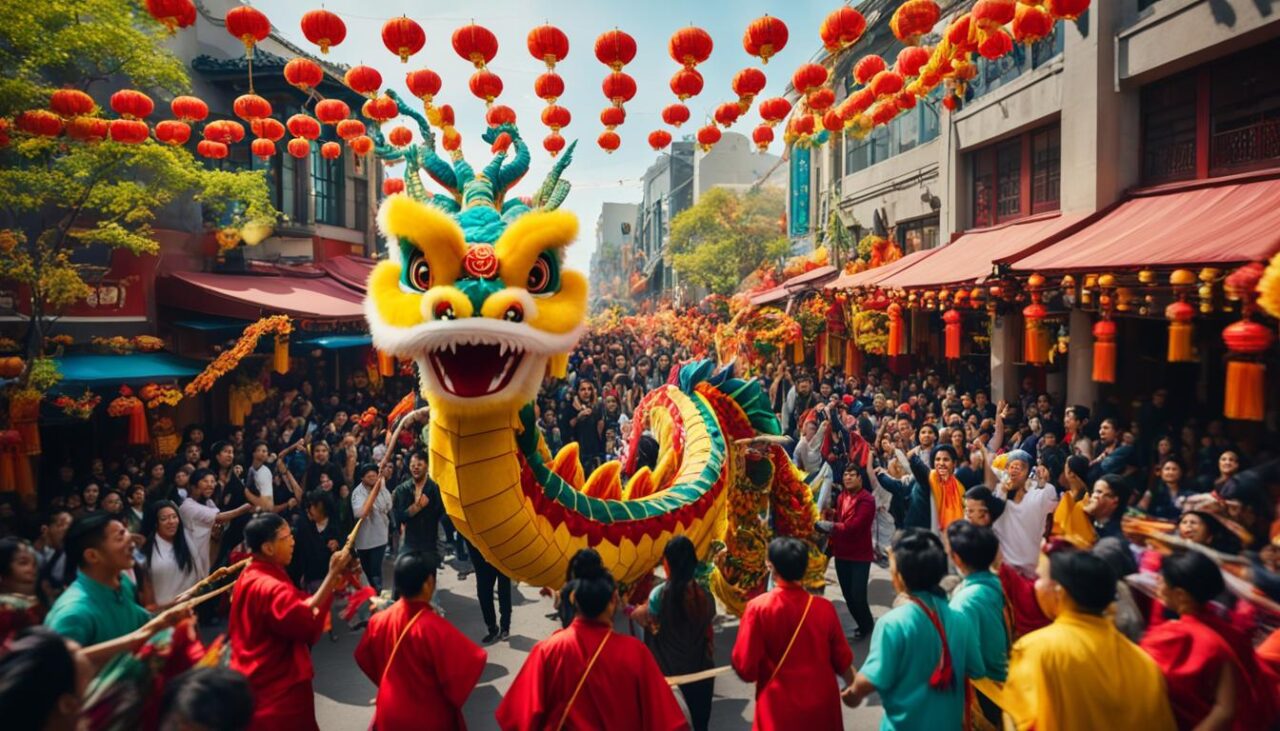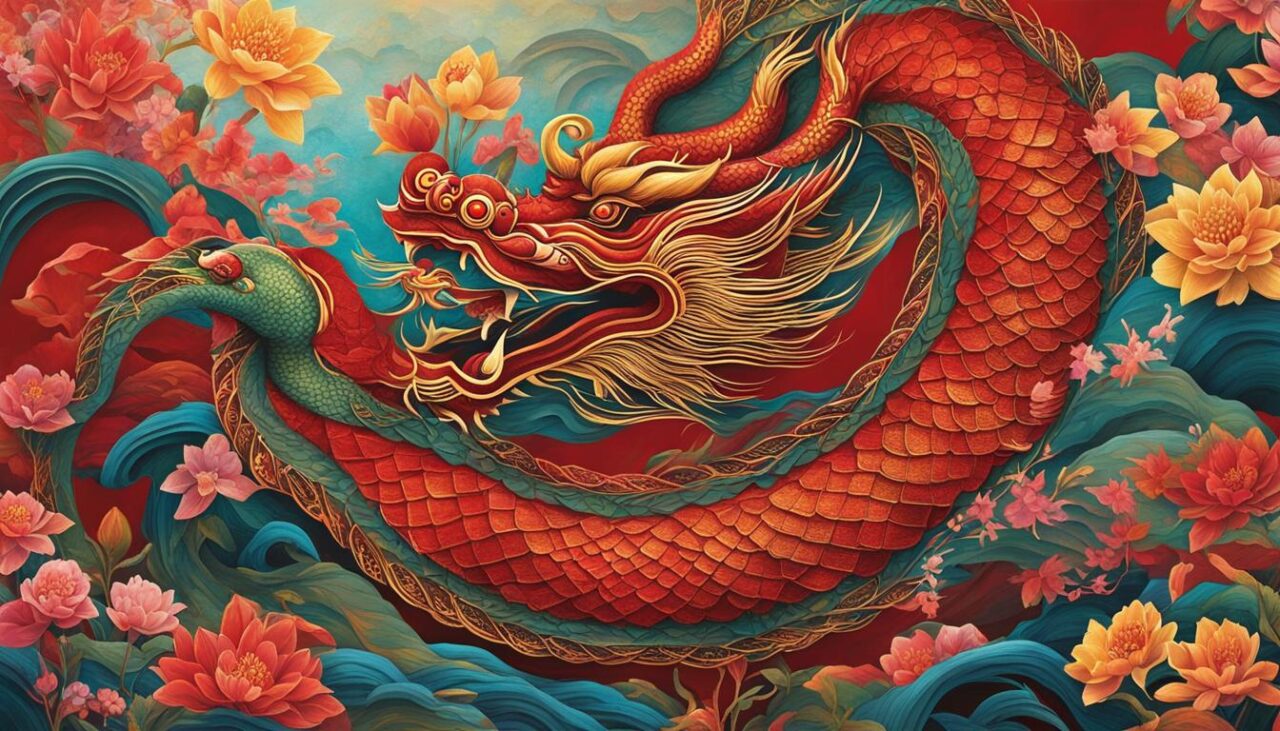Asia is home to a rich and diverse array of cultures, each with its own unique heritage, traditions, and customs. With a vast array of festivals, delicious cuisine, mesmerizing art, and musical expressions, Asia's cultural tapestry is truly captivating. The continent is also known for its linguistic diversity and religious practices, making it an intriguing and enchanting part of the world.
Key Takeaways:
- Asia has a rich and diverse cultural heritage.
- Asian festivals are vibrant and showcase the region's cultural tapestry.
- Asian cuisine is renowned for its unique flavors, ingredients, and cooking techniques.
- Asian art has a long and varied history, spanning from traditional to modern styles.
- Asia is home to thousands of languages and dialects, reflecting the continent's linguistic diversity.
Exploring Ancient Traditions and Customs
Asia is a land steeped in ancient traditions and customs that have been passed down through generations. These practices and rituals are an integral part of Asian culture, and they offer a fascinating insight into the region's rich cultural heritage.
One of the most distinctive aspects of Asian culture is its veneration of ancestors. People in many Asian countries believe that their ancestors continue to watch over them and offer protection, guidance, and blessings. This deep respect for the dead is reflected in the elaborate ancestral shrines found in many homes and temples.
Another important aspect of Asian culture is the concept of “face.” The idea of saving face is paramount in many Asian societies and it refers to the importance of maintaining honor, prestige, and reputation in social interactions. This cultural trait is often reflected in the subtleties of Asian communication, including nonverbal cues and indirect language.
“The concept of face is crucial in Asian cultures. It governs many aspects of social interaction, from gift-giving to business negotiations.”
Throughout Asia, there are numerous ancient customs and practices that have been preserved over the centuries. For example, the Japanese tea ceremony is a highly choreographed ritual that has been passed down for centuries. Similarly, Chinese calligraphy, Indian yoga, and Thai massage are all traditional practices that have endured through the ages.
For many Asians, the adherence to ancient traditions and customs is seen as a way to honor their cultural heritage and maintain a connection to their roots. This attachment to cultural heritage is also reflected in the efforts made to preserve historical sites and artifacts across the region.
By exploring the ancient traditions and customs of Asia, we can gain a deeper appreciation of the region's cultural richness and diversity. Whether it's through observing ancestral rituals, participating in traditional practices, or visiting historic sites, there are countless ways to connect with the past and honor the legacy of Asian culture.
Vibrant Festivals and Celebrations
As a region steeped in rich cultural traditions, Asia boasts some of the world's most vibrant and colorful festivals and celebrations all year-round. From religious observances to seasonal events, these festivals offer a breathtaking glimpse into the cultural tapestry that defines Asian culture.
Chinese New Year
One of the biggest and most widely celebrated festivals around the world, Chinese New Year, or Spring Festival, is a time for families to come together and renew ties. The festival takes place in late January or early February and is marked by the iconic dragon and lion dances, fireworks, and the giving of red envelopes filled with money to children.

Diwali
Also known as the “Festival of Lights,” Diwali is celebrated by Hindus, Sikhs, and Jains in India and other parts of the world. It falls between mid-October and mid-November and is marked by the lighting of lamps, colorful decorations, and the exchange of sweets and gifts. Diwali celebrates the victory of good over evil, and it is believed that lamps light the way for the goddess of wealth to visit homes during the festival.
Cherry Blossom Festival
One of Japan's most popular festivals, the Cherry Blossom Festival, or Sakura Matsuri, celebrates the blooming of cherry blossoms each spring. The festival takes place across the country, attracting millions of visitors who come to enjoy the stunning pink and white blossoms and partake in traditional picnics under the trees. During the festival, there are also parades, fireworks, and other cultural events celebrating Japan's rich heritage.
These are just some of the many festivals that showcase the extraordinary diversity and richness of Asian culture. Whether it's with dragon dances, lanterns, or cherry blossoms, these joyous celebrations are a testament to the deep cultural traditions that continue to flourish across the continent.
Delightful Asian Cuisine
Asian cuisine is renowned and beloved worldwide for its explosive flavors, unique ingredients, and cooking techniques. It's impossible to fully understand Asian culture without exploring its cuisine. From China's savory dumplings to Japan's delicate sushi, from Thailand's spicy curry to India's aromatic biryani, Asian cuisine is diverse, rich, and always tantalizing.
The secret to Asian cuisine's signature taste lies in its ingredients – a perfect blend of flavors, textures, and spices. The combination of sweet, sour, salty, and spicy is what sets Asian cuisine apart. Woks, chopsticks, and steaming baskets are integral to the traditional cooking techniques used in Asian cuisine, adding an element of theater to the dining experience.
Each region in Asia has a distinct cuisine that reflects its unique culture and traditions. China's Cantonese cuisine is known for its mild and light flavors, while the Sichuan cuisine is famed for its fiery and spicy dishes. Japan's cuisine showcases its love for seafood, with sushi, ramen, and tempura being some of its most famous dishes. Thai cuisine has a balance of sweet, sour, salty, and spicy flavors, and it's dishes are made with a combination of fresh herbs and spices. India's cuisine varies by region, but is characterized by its aromatic spices and curries.
Asian cuisine is more than just food; it is a way of life. It brings people together around the table to share stories, make memories, and celebrate community. Every dish tells a story of a country's history, culture, and traditions. Asian cuisine is a perfect blend of flavors, textures, and spices with a unique cultural identity.
Art and Expression in Asia
Art has been an integral part of Asian culture for thousands of years, reflecting the region's history, beliefs, and customs. From traditional paintings and sculptures to contemporary installations and performances, the diverse world of Asian art never fails to leave an impression on its viewers.
The art of calligraphy, which originated in China over 2,000 years ago, is a prime example of the region's rich artistic heritage. It involves the use of a brush and ink to write beautiful characters on paper or silk. Calligraphy is not merely writing; it is an art form that requires precision, skill, and creativity.
Another popular form of Asian art is sculpture, which varies greatly by region and religion. In Japan, Buddhist sculptures made of bronze and wood are highly revered for their serene beauty, while in India, the intricate carvings on temples and palaces are a testament to the country's rich cultural heritage.
Contemporary art is also thriving in Asia, with many artists using their work as a platform to express their views on the region's changing social and political landscape. Installations, like Yayoi Kusama's Infinity Mirror Rooms, have gained international recognition for their innovative and thought-provoking designs.

Asian art is not just a form of visual expression; it also encompasses various other art forms such as music, dance, and theater. The traditional performing arts of Asia, such as Kabuki in Japan and Peking Opera in China, blend music, dance, and drama to create captivating performances that have been enchanting audiences for centuries.
Language Diversity in Asia
Asia is home to a vast array of languages, making it one of the most linguistically diverse regions in the world. With thousands of languages spoken across the continent, language plays a significant role in shaping and preserving cultural identities.
The concept of language in Asian countries is more than just a means of communication. It is also intricately tied to cultural practices and traditions, often reflecting the culture's history, values, and beliefs. The diversity in languages across Asia can tell a story about a country's past, migration patterns, and political influences.
For instance, India has the second-highest number of languages spoken in the world, with over 19,500 dialects. The diverse languages in India are closely linked to the country's religious practices, cultural traditions, and social customs. Similarly, China has over 300 languages spoken within its borders, with Mandarin being the most widely spoken language.
“Language is not just a means of communication. It is an essential part of Asian culture, reflecting the region's unique heritage and diversity.”
While it may seem like a challenge to navigate through the linguistic barriers of Asia, efforts are being made to promote language diversity. For example, initiatives promoting multilingual education and preserving indigenous languages are being implemented in many countries across the continent.
Overall, language diversity in Asia is an integral part of the region's cultural tapestry. From the regional dialects in Japan to the centuries-old scripts in Southeast Asia, the linguistic landscape of Asia is as intriguing as it is diverse.
Conclusion
In conclusion, Asian culture is incredibly diverse and rich in traditions, festivals, cuisine, art, language diversity, and religious practices. It is a testament to the ingenuity and creativity of the people of Asia, who have managed to preserve their unique identities while adapting to modern times. This article has explored the different facets of Asian culture, from ancient traditions to vibrant festivals, delectable cuisine, and artistic expressions.
It is our hope that this glimpse into the vastness and beauty of Asian culture has inspired you to learn more about this incredible region. Whether you are an art lover, a foodie, or simply curious about other cultures, Asia has much to offer. The cultural tapestry of Asia is as captivating as it is varied, and it is something that should be celebrated and cherished for generations to come.







